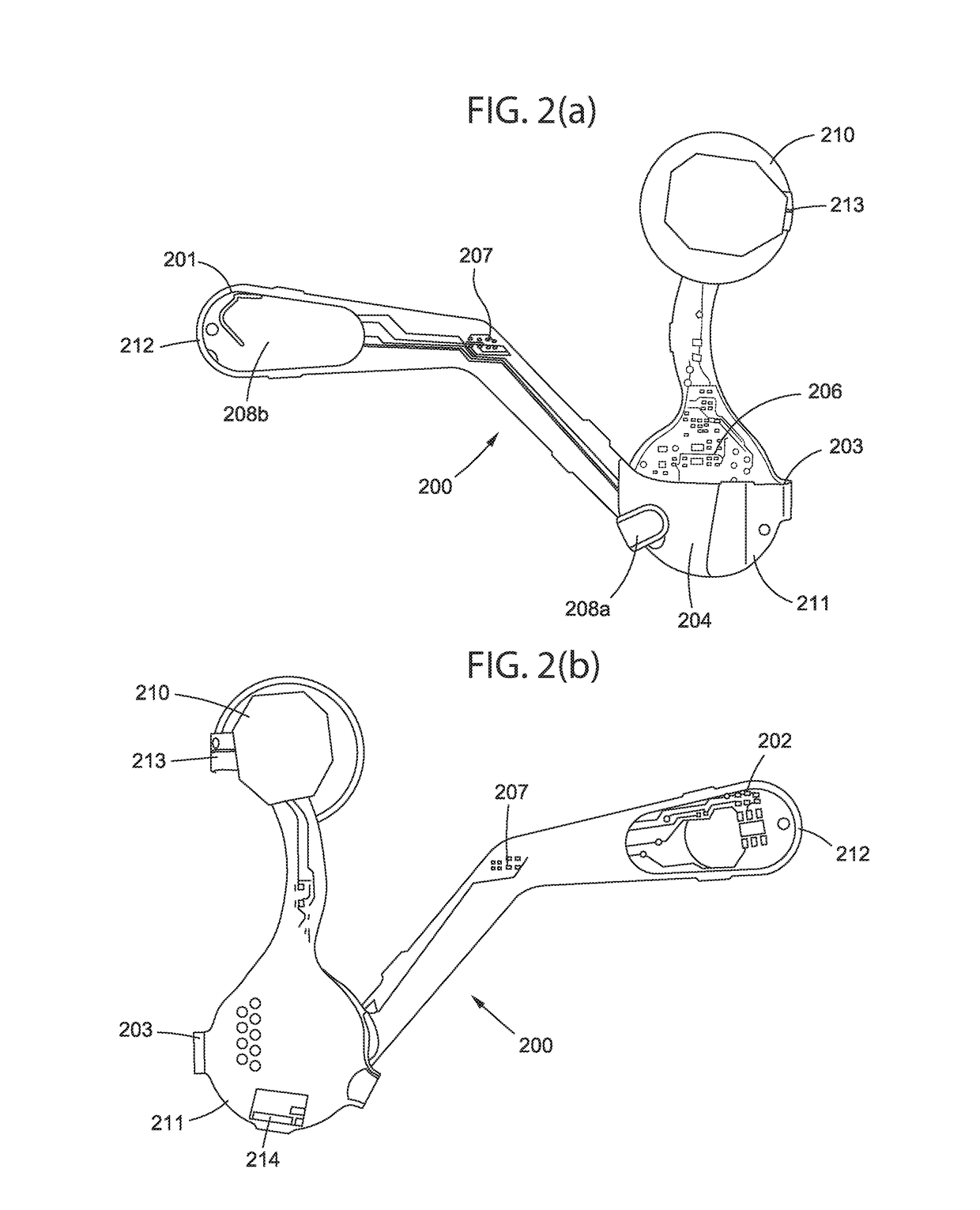Other
metrics are more difficult to read with popular devices such as the smart watches and fitness bands of today.
For example, many smart watches and fitness bands fail to include hardware that reads certain critical
vital signs—like body temperature.
Reading the body's
core temperature accurately is not easily achieved by placing a sensor in just any area of the
human body; for example, a smart watch equipped with a temperature sensor for example is unlikely to properly read a user's
body core temperature because the
wrist is not a medically recognized region for accurately taking temperature measurements—accordingly, any reading of temperature may simply be undependable with common wearables.
Yet, these devices are riddled with shortcomings.
One persistent problem in body-worn wearable devices is the design and placement of antennas.
For example, some devices, designed to be placed at the axillary region, fail in function because the axillary region is an enclosed cavity surrounded by
body tissue that severely attenuates
radio frequency signal, thereby rendering the device unable to properly transmit the temperature measured to a listening device.
Another problem is the
delay in getting an accurate measurement of body temperature after applying the device on the body.
Any measurement means that uses a temperature sensor suffers latency that comes from having to get the temperature sensor in
thermal equilibrium with the body—usually causing a
delay in the order of minutes.
This
delay is not acceptable to users who are looking for an accurate reading in seconds.
Part of the problem resides in the material and means used for conducting heat.
Yet another problem is providing proper battery life suitable for effective continuous health care monitoring; battery life is a challenge for wearable devices and has not been adequately addressed.
The power consumed by these devices is still too high to allow wearable devices to last for many months without recharging or without using a large and intrusive
primary battery.
For a wearable device that is meant to be used for
continuous monitoring, recharging is a problem because the time taken for recharging keeps the device from being used for monitoring.
The problem gets worse for a device that is designed to monitor and act continuously such as in delivering a continuous
dose of medication; these devices can't be allowed to take time off for recharging.
One factor in
power consumption is the power consumed by communication of data from the wearable device.
However, as will be explained below, certain battery parameters are not fully factored by the methods in these disclosures, which may be useful in determination of time intervals for advertising packets or the contents of the packets so as to further increase power efficiency and generally prolong battery life of wearable devices.
Yet another problem is keeping data provided by these devices adequately secure.
The former approach restricts the use of the monitoring solution to only one user, which can be a
single point of failure when the monitoring device is out of range or powered down.
The limitations of these two approaches is that even at lowest power settings, a
receiver dedicated to
eavesdropping on a channel can do so from several feet.
Thus, it is necessary for a
medical device to protect user data from unauthorized access by storing and transmitting data securely; although several solutions have been disclosed, the problem has not been adequately addressed.
Yet another problem that has not been adequately addressed is providing timely insights and providing these insights via meaningful alerts to the right entities.
Yet another problem faced by wearables is the device's adaptability to the wearer's environment.
Wearable devices for
continuous monitoring may be worn all the time, but there are times when these devices should be put in a non-transmitting mode even when worn.
 Login to View More
Login to View More  Login to View More
Login to View More 


